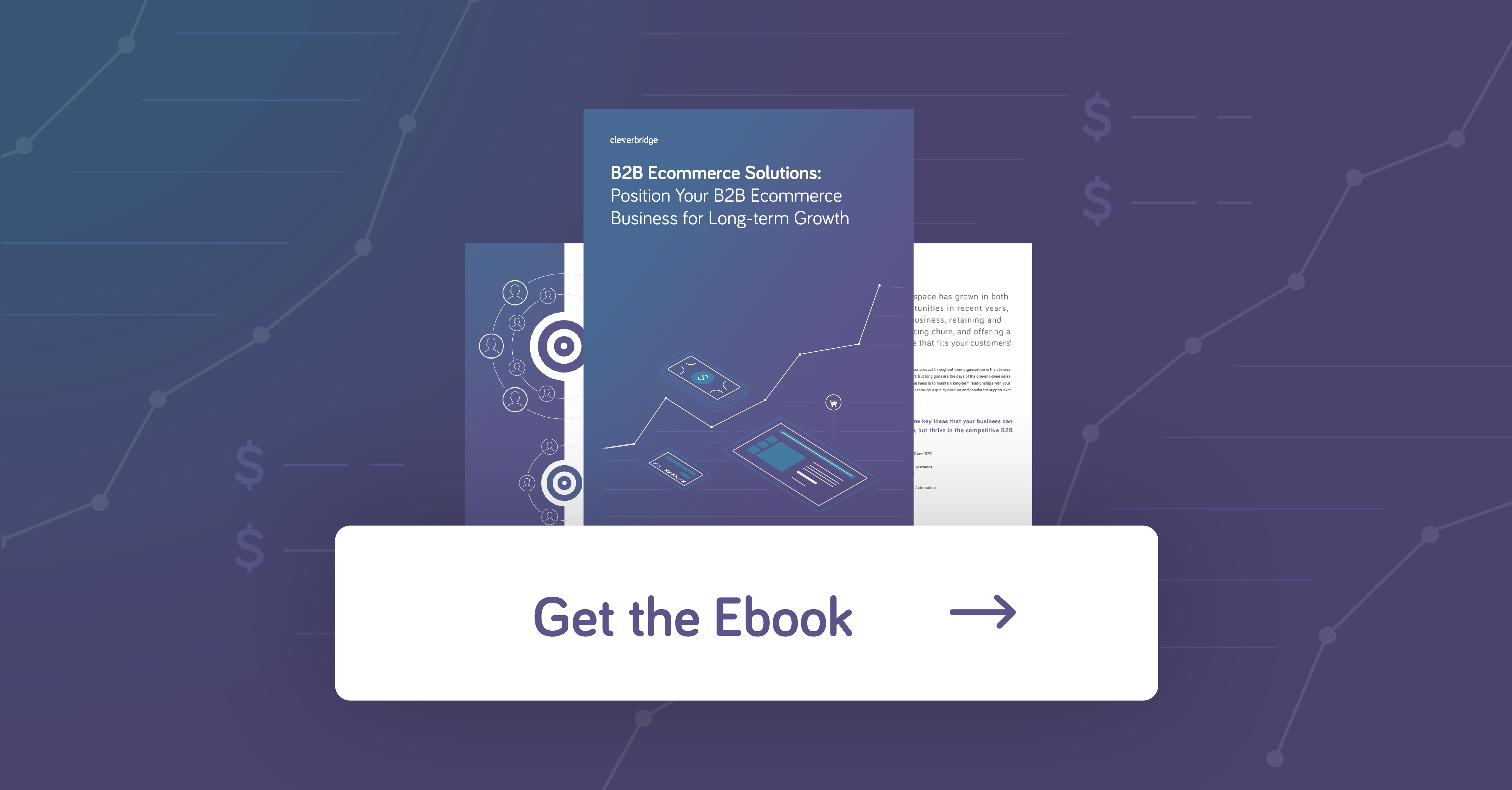Will technology replace my job? If so, when?
As the use of automation and artificial intelligence becomes more ubiquitous, these questions continue to thwart the future of job security across many verticals.
Customer service, manufacturing and agriculture are just a few industries that have seen portions of their workforce replaced with automated processes, which, while increasing efficiency and output, places the need for human labor on the chopping block.
The continued expansion of ecommerce – particularly in the B2B space – rightfully begs the question, “what will become of the traditional sales role?”
More than ever, customers prefer to conduct research online before a purchase without the often arduous process of speaking with a sales representative. And as more emphasis is placed on the consumerization of B2B, removing as much friction and as many obstacles as possible on the path to purchase will be vital for every B2B company’s success.
That’s great news for businesses who’ve simplified the online buying process to support customer acquisition and retention, but for the traditional sales representative, the outlook may seem grim.
In fact, Forrester projects that as many as 1 million B2B sales positions will be lost by 2020 due to the growth of ecommerce.
Scared yet? Well, we certainly hope not.
As is often the case, the evolution of technology may put to bed a certain way of thinking, but it opens the door to untold potential and growth, with the B2B sales space bearing no exception.
Higher Value Sales Will Always Require a Sales Rep
In a previous post, we discussed the low-dollar/high-volume “long tail” model, in which the aggregate revenue generated from all low-value customers may eclipse that of the fewer higher-value customers.
The key concept here is that automating these lower-value deals on a renewal basis doesn’t replace the need for a sales team, but rather frees up those resources to offer a more personal touch to the higher-value customers.
In the ecommerce space, this is where a sales rep’s value increases significantly.
According to SaaStr founder Jason Lemkin, a prospect prefers to speak with someone before purchasing on orders over $299 per month.
In the B2B space, orders more than $299 likely represent a fair amount of your base. When and if you’ve solidified the automation of those lower-value deals, your sales team can take on a much more consultative rather than transactional role, building the longer-term relationships necessary to maintain customers for the long haul.
Although Forrester’s projection of job losses may seem discouraging, the firm also projects a 10-percent increase in the number of sales people with skills that can support solving their clients’ problems rather than simply selling them a product.
Enable CPQ to Focus on Your Value Proposition
Manually quoting a price for a complex B2B product takes up a significant amount of the sales rep’s time, not to mention lends itself to mistakes and misinformation – unavailable configurations, unapproved discounts, etc.
The Configure Price Quote (CPQ) model enables a B2B seller to provide a quick and accurate cost estimate based on a complex set of requirements, specifically around features and functionality, add-ons, licenses, etc.
Although CPQ represents the automation of part of the sales process, the sales role remains necessary, particularly around answering product questions, discussing future needs, and overall acting as the customer’s key touchpoint.
Sales reps spend less than 45 percent of their time selling, and in some cases less than 10 percent maintaining active relationships with their prospects and customers, according to Gartner.
The CPQ model automates the details on the back end and empowers the sales rep to build the customer relationship, support customization, and in many cases upsell.
Own the Less Traditional Sales Funnel
Marketing and sales teams tend to traffic in the Awareness-Consideration-Decision customer funnel, but in the ecommerce world, the customer cycle just isn’t that linear.
The real-world purchase cycle has far less order to it, and prospects often bounce around before making a purchase. This is where the sales rep can take on a much more marketing/education-focused role, instead of simply scrambling to nurture leads.
The B2B prospect needs information, but more than that, they need the volume and type of information specific to their place in the buying cycle before moving to the next stage. Even after they make the purchase, renewing in the years to come will likely require further customization, changes in usage, additional users, add-ons, etc.
With many of the basics covered using technology and automation, the sales rep can truly transform into a guide or consultant, meeting the customer where they are, instead of telling them where they should be.
Like what you read? Learn more B2B best practices in our latest ebook. It’s free to download.
Learn how cleverbridge can help manage, monetize and optimize your digital business as you continue to grow. We take responsiblity for recurring billing, global payment processing, compliance, customer service, and more. Contact our sales team today.
Kyle Shamorian is the content marketer for cleverbridge. Connect with him on LinkedIn.
